|
||||||||||
|
T'IEN HSIAARCHITECTURE CHRONICLEDayu Doon 董大酉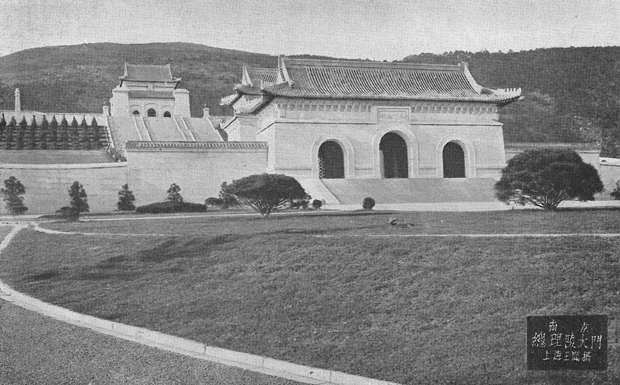 Fig.1 Entrance to the Sun Yat-sen Mausoleum, Nanking
Chinese architecture has never been considered important in the history of architecture, because it has developed independently and has exercised little, if any, influence on the main stream of architectural development outside China. The Chinese are possessed of considerable decorative skill and mechanical ingenuity which feature prominently in their architecture. Built of timber and brick and decorated with much richness of colour and ornament, Chinese temples, pagodas and pavilions are interesting rather than impressive. Great size and splendour, massiveness and originality of construction are features that are conspicuously absent. Although endowed with vast natural resources and abundant in building materials, China never achieved what the Greeks and Romans did in the art of building. The probably reason is because in the first place, Chinese art has always found its favourite expression in painting and calligraphy. Chinese art was inclined to be idealistic rather than materialistic; for the Chinese people revelled in the beauty of nature and had little interest for material beauty such as is found in architecture which they considered as something subservient to daily needs. Secondly, Chinese architecture is essentially a matter of timber and bricks. Unlike the Egyptians, the Chinese cared little for permanence. Lastly, thrift was considered one of the chief virtues of a ruler; and in this respect, he was quite different from the Egyptian Pharaohs who employed vast armies of slaves for the erection of pyramids and other impressive and massive buildings.  Fig.2 One of the buildings of Yenching University, Peiping 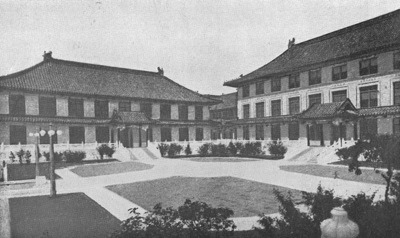 Fig.3 Peking Union Medical College, Peiping 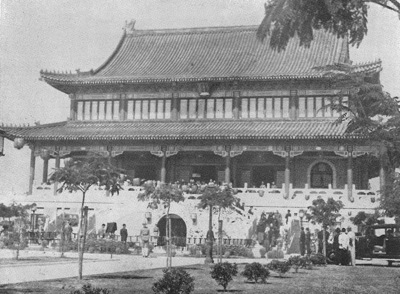 Fig.4 Museum for Party Relics, Nanking Records of ancient Chinese architecture are scarce today. Any information we have we obtain from descriptions in books. Examples of more recent architecture are to be found in the Palace buildings, imperial tombs, Buddhist and Confucian temples, and pagodas which, although in the process of deterioration, still stand today as representatives of Chinese architectures of the last few hundred years. Architecture was never a distinct profession in China. The word for “architect” was unknown. Buildings were put up by masons and carpenters without the help of plans. Smaller houses were built on the basis of verbal descriptions. For larger buildings, a written description of the number of rooms and their dimensions, and specifications of materials for the exterior and interior, were probably all that was necessary for an agreement between the owner and the builder. Only in important structures, such as the Palace buildings, do we find rough plans showing arrangements of the various parts. With the introduction of modern industry and commerce, masons and carpenters were found incapable of handling large structures that could not be put up my mere supporting columns an beams. Here, the “engineers” stepped in. The vital problems confronted, however, were not those of appearance and effect, but were those of foundation, columns, trusses and other technical problems. Architecture in general was associated with brick and mortar, steel and concrete; the buildings put up were merely poor imitation of European models with the exteriors only a shade more hideous than the interiors. Then the general awakening of the people came with a rush. Architecture turned a new page. The “architect” has now come into his own. A group of young students went to America and Europe to study the fundamentals of architecture. They came back to China filled with ambition to create something new and worthwhile. They initiated a great movement, a movement to bring back a dead architecture to life: in other words, to do away with poor imitations of western architecture and to make Chinese architecture truly national. This movement is often referred to as the “Renaissance of Chinese Architecture”. However, a distinction should be made between the attempt to “restore” Chinese architecture and the movement to “adapt” Chinese features for modern purposes. When one recalls the name of the late Mr. Lu Yen-chih (呂彥直), designer of the Sun Yat-sen Mausoleum at Nanking, the first monumental work planned and built according to modern architectural principles, one is recalling the name of a pioneer of this new movement. The same architect designed the Sun Yat-sen Memorial Auditorium in Canton which demonstrates the possibilities of adaptation. Although the new movement owed its development to the pioneering spirit of a few foreign education architects, its origin must be traced to the earlier work of the missionaries who adapted Chinese style for their buildings. Notable examples of the latter are to be found in Ginling College at Nanking and Yenching University in Peiping. Both these buildings are the work of Henry K. Murphy, and American architect whose name is often associated with the so-called “Renaissance on Chinese Architecture”. Other well-known buildings designed by foreigners are the Peking Union Medical College and the Peiping Library, both of which are executed in elaborate style by skilled artisans of the old school. 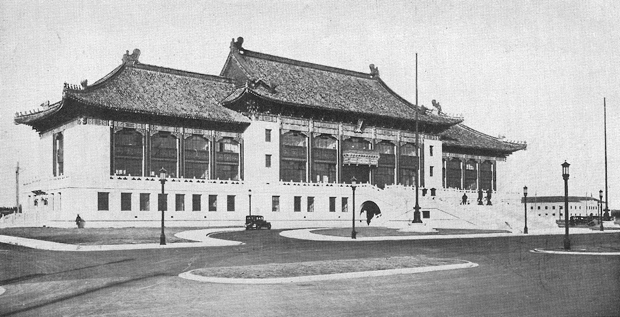 Fig.5 Municipal Government Building, Shanghai
Since the removal of China’s capital from Peking to Nanking China has been going through as period of almost frenzied growth, and of vast construction schemes. Never before in the history of China has reconstruction work gone on with such rapidity. It has torn over the country at a speed and on a scale without parallel or precedent. The improvement of provincial and city governments and the establishment of various government institutions have resulted in great building activities. New public buildings are being erected everywhere. Among those in Nanking the Ministry of Railways is an early example of a modern office building in Chinese style. It is probably the first important government building to be erected in the Chinese style: it stands out as a worthy attempt to adapt Chinese architecture to modern office use. The Ministry of Communications Building, located directly opposite the former, can hardly be considered a contribution to Chinese architecture. The recently completed Museum for Party Relics is an example of faithful reproduction of the style of old buildings. With its numerous columns and framed openings this structure reminds one of the Palace halls of the old capital. The open air Music Pavilion built on the hills of Chung San Park outside of Nanking is a unique example of clever adaptation of Chinese features.  Fig.6 Shanghai City Museum 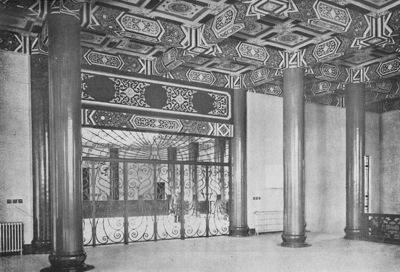 Fig.7 Delivery Room of Shanghai City Library Turning to Shanghai, we find a group of modern buildings which amply demonstrated the spirit of a new movement. Instead of aiming at a reproduction of old styles, an attempt is made to apple and modify features suitable to modern needs. In the Municipal Government Building, the conventional carves balustrade is used. The otherwise monotonous roof is raised in the middle to give importance to the middle portion of the building. In the City Museum and the City Library we find a different treatment of the exterior. Special requirements such as overhead lighting do not allow the use of the conventional roof. Only the central portion is emphasized by a “gate-tower” covered with a yellow tile roof. The omission of the heavy roof on the rest of the building is due to a measure of economy. Another example of modified Chinese architecture is the imposing granite entrance to the City Stadium. It shows the possibilities of adapting Chinese decorative features to modern structures. There are numerous other structures which deserve notice. In some cases the problem is solved in a way more satisfactory than in others. Chinese architecture is going through a fundamental change. Chinese architects are producing buildings of an experimental nature. One has a feeling that it may take a long time before changed conditions, new requirements, and other factors will result in a definite new style of Chinese architecture. We find here and there a few who advocate the accurate reproduction of old forms and proportions. They overlook, however, that fact that architecture must meet the needs of the day and follow the progress of time. The history of architecture is nothing but a record of constant adaptations to changed conditions in social life, and in the discovery of new materials and methods of construction. No good can come from mere reproductions of ancient buildings. The old styles must of course be well studies, not only for their outward forms and features, but also for the principles of construction upon which they are founded, much in the same manner as the standard literature of the past must be mastered if one is to have a good literary style. The architect must express himself in the language of his own times. Only thus will the architect be able to produce buildings that will truly reflect the hopes, the needs, and the aspirations of his age and country. 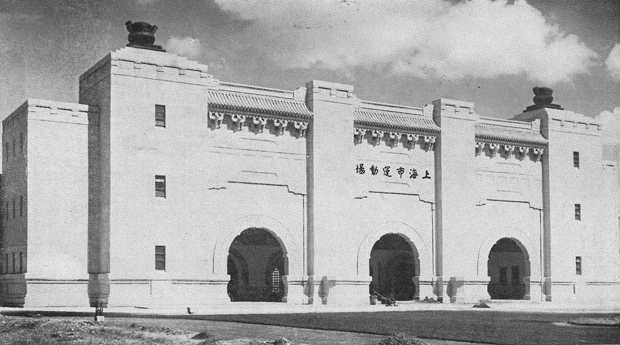 Fig.8 Entrance to the Shanghai City Stadium |